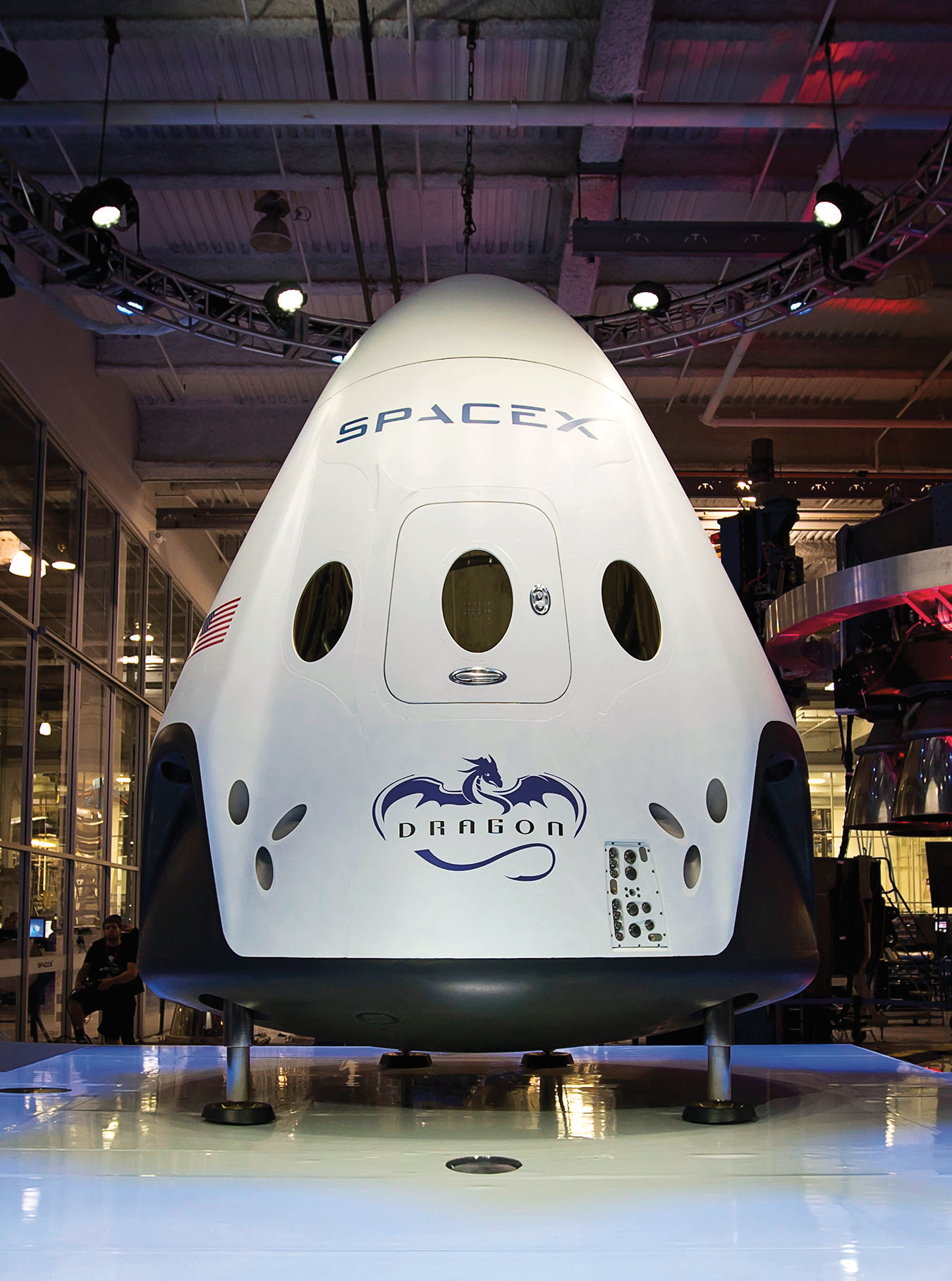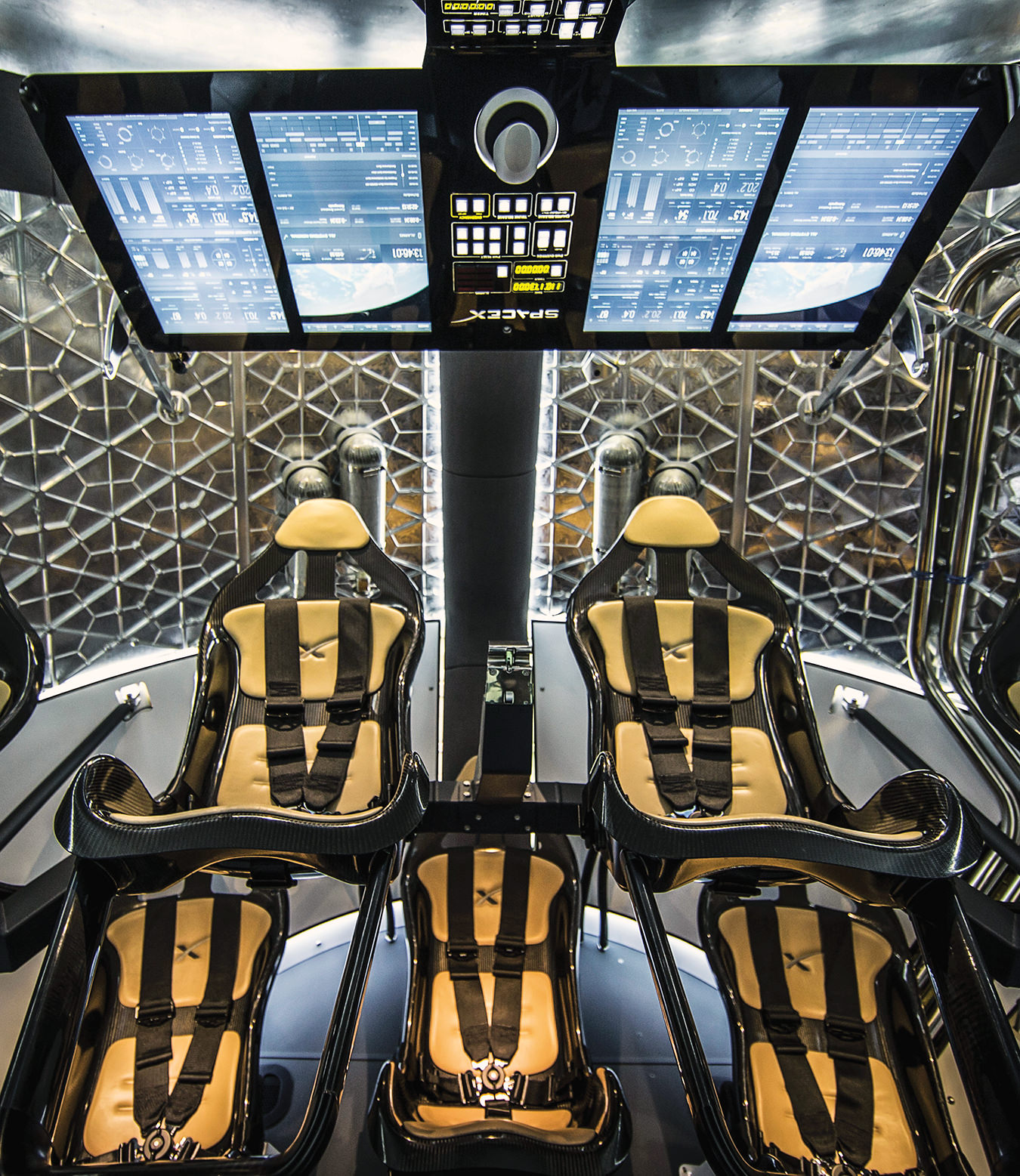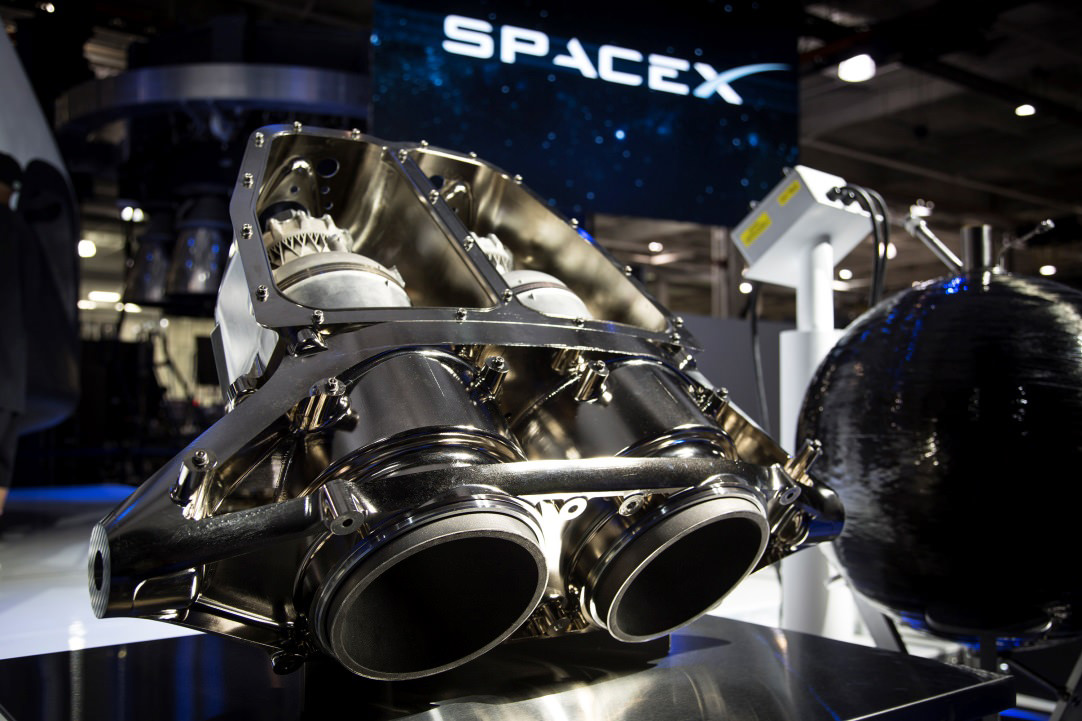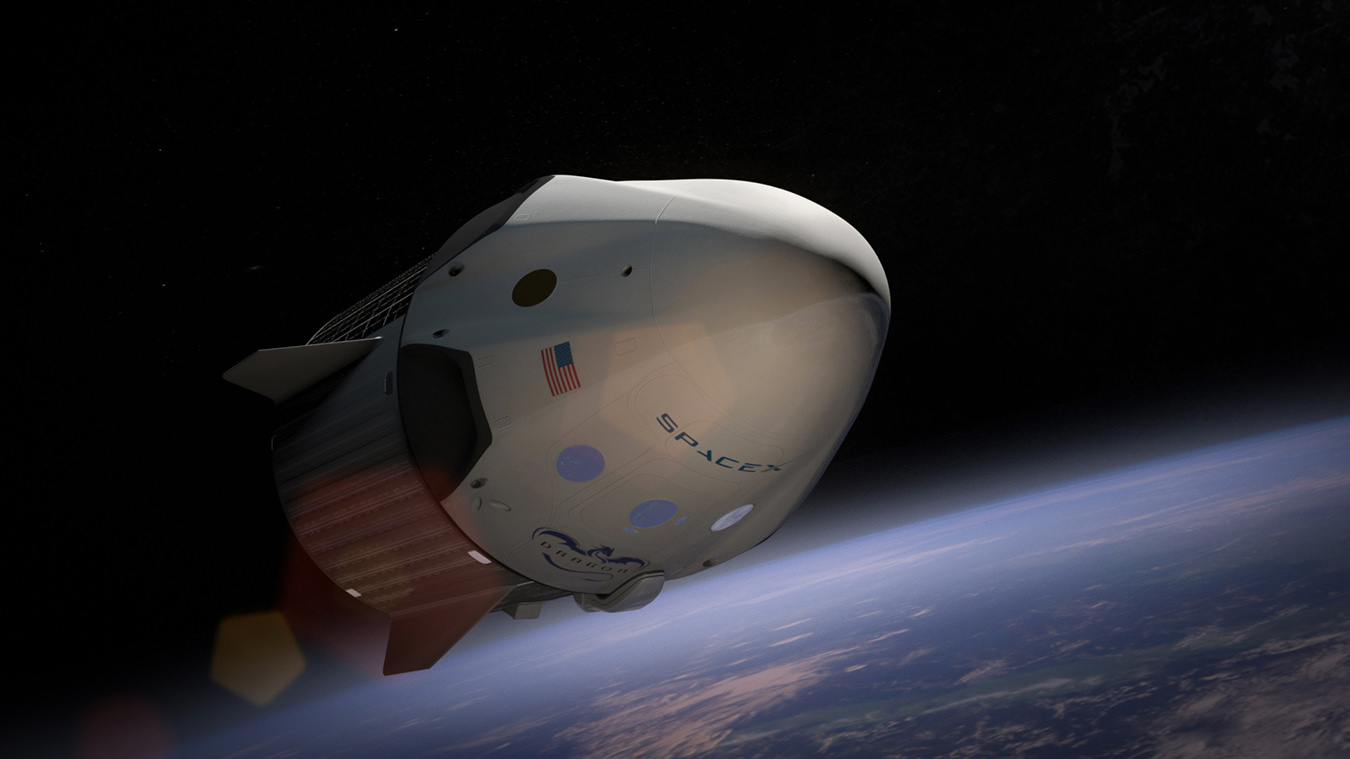Up, Up, and Away
Capitalism comes to the final frontier.
Sometime next year, if you look up—way up—at just the right time, you might see something in the sky that wasn’t there before. That’d be the Dragon V2, the next generation of space “taxi” shuttling astronauts, cosmonauts, and the occasional space tourist across the cosmos.
Sure, it’s a fair distance from the Enterprise or the Millennium Falcon, but make no mistake, the V2 is just as trendsetting. As the most visible example of a new generation of privately designed, constructed, and funded space exploration vehicles, the V2 and its ilk are picking up where underfunded and overwhelmed government agencies left off.
It’s not that capitalism has never had a place in space. Defence contractors and industrial conglomerates have long been part of NASA’s plans, and a long list of companies have built components, systems, and satellites for various space-related projects. But the big ideas—space stations, lunar landings, voyages to other planets—those have always been the business of the state. That is, until the state couldn’t pay the bills. In the wake of the 2008 recession, budget-busting missions to the great beyond fell more than a few notches down the congressional priority list, giving smaller players a chance to get into the game.
SpaceX (Space Exploration Technologies) is probably the best known. Founded in 2002 by serial entrepreneur Elon Musk (also known as the CEO of Tesla Motors), SpaceX represents a radically different vision of how humankind will conquer the final frontier. Instead of functioning as an outsourcing agent of the government, SpaceX is designing and building its own engines, rockets, and spaceships. The in-house approach has resulted in lower costs than anyone else shooting things into orbit—the company’s Falcon 9 rocket has a launch cost of $60-million (U.S.) and counting, about one-sixth of the Delta or Atlas rockets NASA typically uses.
Thus far, SpaceX has made four deliveries to the International Space Station under contract from NASA, and is currently working through a $4-billion (U.S.) backlog of launch contracts, two-thirds of which are from commercial customers. But Musk has made no secret that his eyes are aimed considerably higher: the company is currently developing the Mars Colonial Transporter, which will enable humans to land and live on the red planet in the not-too-distant future.
Musk is not the only one with grand designs. Richard Branson’s Virgin Galactic is making money transporting the well-to-do to the Kármán line. Shackleton Energy is developing equipment to mine the moon. Bigelow Aerospace is building a system of modular space habitats, with the goal of putting the building blocks of a privately owned space station in orbit by 2015.
This being capitalism, the primary goal of these companies is profit. But space is as much an idea as a destination, and starting a for-profit space company is also an expression of passion. For this new generation of astro-preneurs, the thought of going beyond the infinite is an attempt to make the wildest fantasies of one’s childhood come true, to be part of something bigger than business or even life itself. There’s value in that—for shareholders, and for all of us.
Photos provided by SpaceX.








